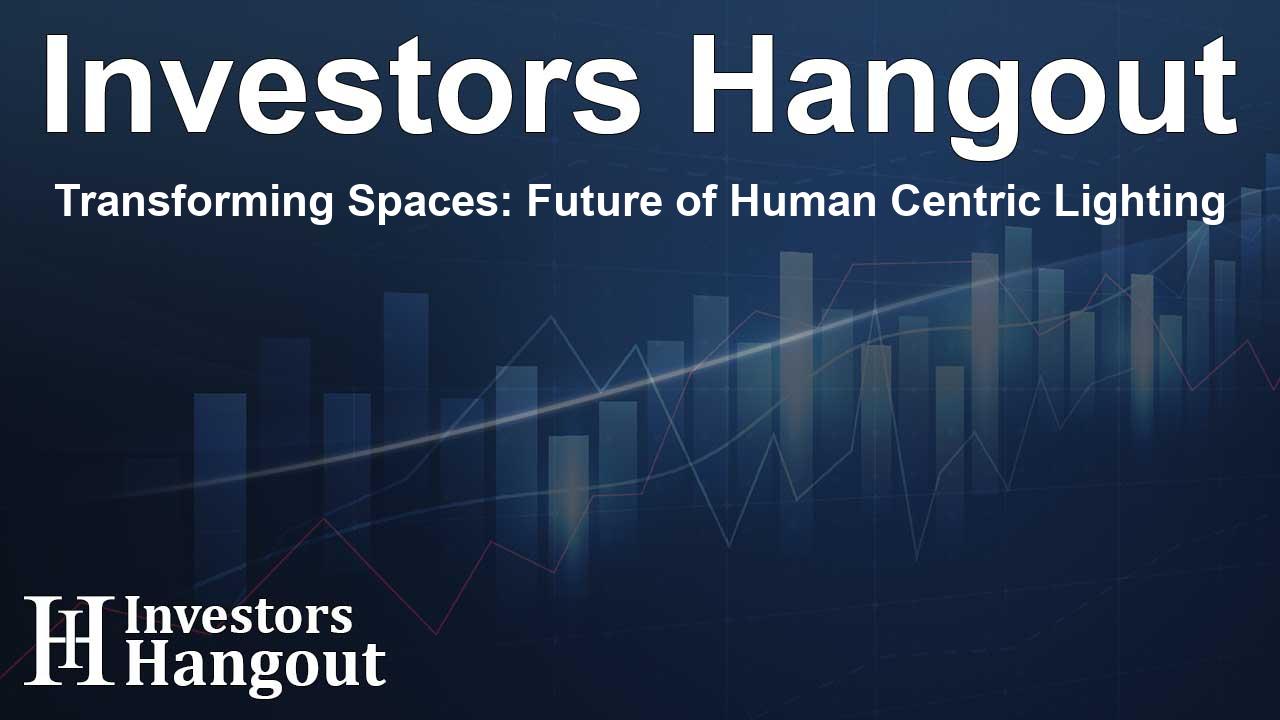Transforming Spaces: Future of Human Centric Lighting

Transforming Spaces: Future of Human Centric Lighting
In recent years, the human-centric lighting (HCL) market has gained remarkable traction. Valued at approximately US$ 3.25 billion, it is projected to soar to US$ 20.41 billion by 2033, reflecting an impressive compound annual growth rate (CAGR) of 22.65% during the forecast period. This surge underscores the rising significance of lighting systems designed specifically to enhance human well-being.
Understanding Human-Centric Lighting
Human-centric lighting focuses on optimizing the way artificial light mimics natural daylight, ultimately benefiting both the physical and mental health of individuals. It's not merely about illumination; it integrates the science of circadian rhythms to improve mood, increase productivity, and support overall well-being. For instance, workplaces utilizing HCL report enhanced employee satisfaction and productivity. By aligning lighting conditions with the natural light cycle, businesses aim to foster healthier working environments.
Key Drivers of Market Growth
Several factors are propelling the growth of the HCL market. Greater awareness of the importance of circadian lighting in improving architectural designs in public spaces, especially workplaces and hospitals, is at the forefront. Incentives from regulatory frameworks demanding healthier lighting practices further bolster this shift.
The Impact of Regulatory Frameworks
Different regions exhibit unique approaches to regulating human-centric lighting. For example, the European Union's proposed Circadian Compliance Act enforces specific lux thresholds, which could either push forward or slow down market growth, depending on regional compliance capabilities. This fragmented landscape presents both challenges and opportunities for innovators in the lighting industry.
Adoption in Emerging Markets
Interestingly, emerging markets are adopting hybrid lighting models to address local infrastructural gaps. For instance, in various Latin American countries, local firms have begun to explore off-grid solar-powered circadian systems, particularly beneficial in underserved areas. With solutions like pay-as-you-go systems, communities are embracing HCL technologies that were once deemed too costly or complex.
Technological Innovations Revolutionizing HCL
The unfolding advancements in bio-adaptive materials and other innovative technologies are reshaping the landscape of human-centric lighting. For example, the development of adaptive lighting systems that respond to real-time environmental changes indicates a significant leap towards smarter and more contextual lighting solutions. The integration of AI and IoT in lighting systems enables unprecedented personalization and optimization of lighting conditions, making them not only user-friendly but integral to enhancing human health.
Challenges Ahead
Despite the promising trends, the HCL market faces notable challenges. Geopolitical tensions can disrupt the supply chains of critical materials like gallium and rare-earth elements, complicating the production and scaling of human-centric lighting solutions. Companies are continually exploring strategies to mitigate these risks by diversifying supply sources and investing in sustainable practices.
Consumer Behavior and Market Dynamics
The demand for human-centric lighting is particularly pronounced among cost-sensitive consumers. Retailers are responding with affordable options that maintain high utility. Products from companies addressing specific consumer needs, such as energy efficiency and recyclable materials, see increased adoption among environmentally conscious buyers.
Cultural Nuances Shaping Demand
Cultural factors significantly influence consumer perceptions and market dynamics. For instance, in regions where wellness-driven marketing resonates, there is a higher acceptance of HCL solutions. Conversely, areas lacking awareness face slower adoption rates, requiring educational campaigns to highlight HCL's benefits for health and well-being.
The Road to Sustainability in HCL
Sustainability is a crucial aspect driving innovation in the HCL market. The demand for energy-efficient and environmentally friendly lighting solutions has never been higher. Many companies are pioneering in the recycling of HCL materials and emphasizing the use of renewable resources in production processes, presenting a sustainable path forward.
Key Players in the Market
Several companies are leading the charge in innovative human-centric lighting solutions, such as Signify and Acuity Brands, who are known for their smart office ecosystems and adaptive technologies. The competitive landscape is expanding as niche players also emerge, tapping into specific sectors and regional markets.
Looking Ahead: The Future of Human Centric Lighting
The future of human-centric lighting looks bright and filled with potential. Anticipated technological breakthroughs and regulatory incentives present ripe opportunities for growth. As the market grows, further innovations aimed at improving quality of life will likely take center stage, pushing the boundaries of what lighting can achieve. The convergence of technology, sustainability, and consumer awareness will shape this evolving landscape.
Frequently Asked Questions
1. What is human-centric lighting?
Human-centric lighting (HCL) refers to lighting systems designed to support human well-being by mimicking natural daylight patterns, optimally benefiting users' health and productivity.
2. What factors are driving the growth of the HCL market?
Key drivers include increasing awareness of the health benefits of circadian lighting, regulatory frameworks promoting healthier lighting practices, and technological advancements improving light quality.
3. How does regulation affect human-centric lighting adoption?
Regulatory requirements for circadian lighting can enhance market growth by mandating certain standards, although they can also complicate compliance for companies.
4. What challenges does the HCL market face?
Challenges include supply chain disruptions due to geopolitical tensions, high retrofit costs, and lack of unified global standards hindering scalability.
5. What are the future trends in human-centric lighting?
Future trends will likely center around sustainability, advancements in AI and IoT technologies, and increased focus on personalized lighting solutions to meet diverse consumer needs.
About The Author
Contact Dylan Bailey privately here. Or send an email with ATTN: Dylan Bailey as the subject to contact@investorshangout.com.
About Investors Hangout
Investors Hangout is a leading online stock forum for financial discussion and learning, offering a wide range of free tools and resources. It draws in traders of all levels, who exchange market knowledge, investigate trading tactics, and keep an eye on industry developments in real time. Featuring financial articles, stock message boards, quotes, charts, company profiles, and live news updates. Through cooperative learning and a wealth of informational resources, it helps users from novices creating their first portfolios to experts honing their techniques. Join Investors Hangout today: https://investorshangout.com/
The content of this article is based on factual, publicly available information and does not represent legal, financial, or investment advice. Investors Hangout does not offer financial advice, and the author is not a licensed financial advisor. Consult a qualified advisor before making any financial or investment decisions based on this article. This article should not be considered advice to purchase, sell, or hold any securities or other investments. If any of the material provided here is inaccurate, please contact us for corrections.
